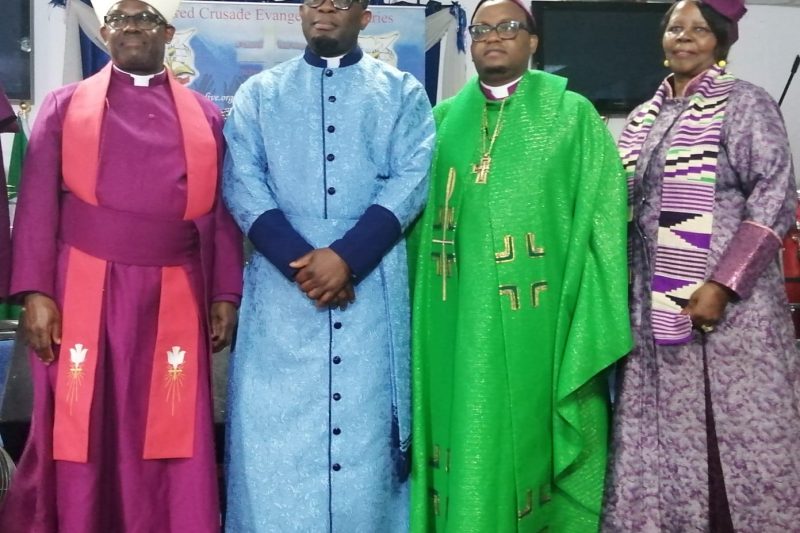
From the very beginning of the church, there has been a structure based on a succession of leadership.
Subtitle
Ordination
After the earthly ministry of Jesus, most of the original twelve disciples became the first generation of leaders in the church.
They, along with Paul, were itinerant evangelists who selected others to be local pastors under their authority (I Cor. 4:17, I Thes. 3:2). This selection process not only allowed for the succession of the next generation of church leaders, it also served to legitimize the authority of the new leaders in the eyes of the Christian population. Thus it is the beginning of the rite of ordination.
a) Ordination began as a commissioning
In the first century, the apostles chose their co-workers and successors and consecrated them for service, based on Old Testament precedents such as Joshua (Num. 27:15-23) and David (I Sam. 16:11-13).
The selection of deacons (Acts 6:3-6), commissioning of missionaries such as Paul and Barnabas (Acts 13:2-3), and appointing of house church pastors (Acts 14:23), were all practical responses to the situations at hand, while at the same time were understood as a recognition of God’s choosing, which was brought to light by the discernment of spiritual gifts.
Through prayer and the laying on of hands (II Tim. 1:6; Num. 8:10), the commissioning affirmed what God had already done, and even when there was an election (Acts 1:21-26), it was only meant to give God an opportunity to show which person was the divinely chosen one.
Throughout the apostolic age the church’s leadership structure only acknowledged a distinction between those who knew Jesus and those who did not (Acts 1:21-22). In a practical sense, the New Testament makes no distinction between the elder, pastor, the bishop or overseer; the terms appear to be interchangeable.
Because the Apostles were itinerant missionaries they were invested with the authority to appoint resident pastors to teach and preside over the local house churches. In many cases, the house church pastors were probably also the hosts and or owners of the homes in which the assembly met.
b) Ordination became a hierarchy
A more formalized hierarchy emerged somewhere towards the end of the first century AD when cities with multiple house churches began the tradition of meeting periodically as informal councils.
These councils naturally developed the practice of choosing one of their own as the chair and spokesperson of the council, authorized to do and speak for the council in correspondence with the Christians in other cities.
This person The chair then became an “overseer,” not of a house church, but of the leaders of the house churches, with authority over the other pastors. At some point, the term episcopos began to be used exclusively for the chair of the council, thus the distinction between the “bishop” and the “pastor” was born.
With the distinction of office of the bishop and the pastor, there emerged a separate rite of consecration for the bishop, which was not considered a different ordination but consecration to a more specific office of the overseer.
Although the bishop continues to be a pastor, like the other pastors, the distinction between the bishop and the pastor was coming to be understood as a distinction of authority, not a different ordination.
While the pastors became the resident teachers and presidents of the local councils, the bishops retained the authority over the content of the teaching. It is critically important that the pastors who are consecrated to the position of a bishop have tangible work on the ground, are gifted, skilled and with the grace to undertake responsibilities that comes with the position of a bishop.
They will be expected to have been in the ministry and service for at least ten years and have acquired credible experience for the benefit of those who will come under their leadership.
c) Ordination became a vacation
It was probably not until the late second century that church leadership became a “full time” job. Even then, there was often no wages involved, so positions of church leadership were by default left to those of independent means who had the free time to conduct church business. It is at this same time that a stricter division between ordained and laity emerged.
When ordination became a vocation, it emerged that ordination has reserved for men because, man is the head of the family; he represents Christ, who is the husband of his bride, the church, and therefore whoever represents the Groom must be male. It was also understood that Christ himself chose twelve men; seemingly, it is clear that the historic limitation to males was also based on cultural assumptions about the pastor as head and shepherd of the household.
d) Role of Bishops
Bishops are the custodians of the GACA vision and have the responsibility to give leadership, and ensure the growth of the Association as well as ensuring accountability among the members.
Bishops shall investigate and examine the qualifications of prospective members by jealously guarding the truth and confronting false teachings and practices, heresy and any form of corruption which are contrary to the Holy Scriptures.
Bishops shall also support, encourage, empower and recognize those who prove beyond reasonable doubt that they have the calling of God into the ministry.
Bishops shall maintain order and unity among the member-churches as well as individual ministers by offering leadership, guidance and encouragement.
Bishops shall ensure member-churches are accountable and have credible work, churches and leaders working with them in responsible positions.
Bishops shall be the voice of the member-churches in their respective jurisdiction and will strive to grow the Association by networking with like-minded people and ministries.
